- About Ramapo
- Academics
- Admissions & Aid
- Student Life
- Athletics
- Alumni
- Arts & Community
- Quick Links
- Apply
- Visit
- Give
Collection Highlights
RODMAN COLLECTION
The Rodman Collection features art from Haiti, Brazil, Cuba, Mexico, Guatemala, Belize, Ecuador, Jamaica, Puerto Rico, Africa, Nicaragua, Canada, Croatia, Bali, the Dominican Republic, Peru, Afghanistan, Amazonia, Panama, Russia, Indonesia, Bolivia, India, Costa Rica, and the United States.
Pierre Augustin
Pierre Augustin (1945 – 2014) favored haunting portraits of the Vodou deities and also did some monumental historical paintings. In the 1970’s he exhibited at the Galerie Monnin and at the Centre d’Art. He was a favorite of Selden Rodman’s and his work appeared in several of Selden’s books. Pierre Augustin faded from prominence in the 1980’s and his paintings today are rare.
Adapted from Augustin, Pierre, the Haitian Art Society.
Rosina Becker do Valle
Becker do Valle (1941 – 2000) was born in Rio De Janeiro, Brazil. She was a housewife until 1955 when she took up painting as a hobby, subsequently enrolling in a painting course in the Modern Art Museum of Rio De Janeiro. She is a very well known artist in Brazil and exhibited internationally. Becker do Valle painted up to the age of 86, and is considered one of the figureheads of the Brazilian naive art world.
Adapted from Rosina Becker do Valle, the Gallery of International Naive Art.
Belkis Ayón
Belkis Ayón (1967 – 1999) was a Cuban printmaker who specialized in the technique of collography. Ayón created large, highly detailed allegorical collagraphs based on Abakuá, a secret, all-male Afro-Cuban society. Her work is often in black and white, consisting of ghost-white figures with oblong heads and empty, almond-shaped eyes, set against dark, patterned backgrounds.
Adapted from Art and Artists: Tate Modern.
Roland Blain
Roland Blain (1934 – 2005) was born in Port-au-Prince. He was a member of the Foyer des Artes Plastiques, an organization of modern artists that broke away from the Centre d’Art in the early 1950’s. He began his studies with Joseph Jacob there in 1959. He was also a professional musician for a decade, during which he abandoned painting to play the trumpet and form his own orchestra. He returned to painting around 1969 and continued to produce art until the late seventies, when his eyesight began to fail.
Adapted from Blain, Roland, the Haitian Art Society.
Murat Brierre
Murat Brierre (1938 – 1988) joined the Centre d’Art in 1957. Mentored by Georges Liautaud, he was one of Haiti’s most prominent metal sculptors. His sculptured subjects reflected Christian and Haitian Vodou themes, primarily female nudes, embracing couples, devils, mermaids, and birds. Brierre exhibited in the United States, Mexico, and Jamaica. The National Pantheon of Haiti displays his sculptures.
Adapted from Stivenson Magloire, Myriam Nader Art Gallery, New York.
Marcial Camilo Ayala
The Mexican folk artist Marcial Camilo Ayala (1951 – 2017) was a Nahau from the village of San Agustin Oapan in the Rio Balsas valley located in the Mexican state of Guerrero. He began as a street artist painting amates (an indigenous Nahau tradition of painting on bark of the Jonote tree). Then in 1972, American art collector Edmund Rabkin discovered him in Taxco, and encouraged Marcial to paint more. The idea spread to his two brothers, Juan and Felix, and they became well-known artists by the late 1970s.
Adapted from Florida Memory via the Institute of Museum and Library Services.
André Dimanche
André V. Dimanche (1901 – 1988) has been described as a mountain man who sculpted twisted tree roots into haunted presences. Sculptures carved by Dimanche, who had only a short training in woodworking and carpentry, were a revelation. The Haitian artist received an award for his work at the Fine Arts Pavilion of the 1949 exhibition celebrating the Bicentenary of the city of Port-au-Prince. Being self-taught, Dimanche never felt constrained to comply with academic rules of anatomy.
Adapted from Where Art is Joy, Ruggles de Latour, New York, and About the Artist: Indigo Arts Gallery.
Ras Dizzy
Ras Dizzy (1932 – 2008) is one of the most important painters to emerge from the second generation of self-taught Jamaican artists born from 1930 to 1949. Dizzy was a poet before he became an itinerant artist. He wandered the island with his paintings under his arm to display and sell to people. Inspired by his culture, he references a prophetic location called Sheffield as his visual home ground. He uses deep color to depict subjects like reinvented palm trees, mysterious market women, cowboys, fantastical boats, extremely detailed horse races, Rastafarians, and even demonic beings he calls monopolys. Each Dizzy painting is a rich pool of contrasting color that resolves into meditative abstractions.
Adapted from THE BUSH HAVE EARS: LEONARD DALEY & RAS DIZZY, Calvin-Morris Gallery.
LaFortune Félix
Lafortune Félix (1933 – 2016) began his working life as a farmer and Vodou priest who painted his own temple with images of the lwa. Upon seeing these paintings Pierre Monosiet, the late curator of the St. Pierre College Museum of Haitian Art, commissioned Félix to create some works on masonite board and provided him with art materials. In his later years, the artist lived in St. Marc and continued painting atmospheric Vodou subjects.
Adapted from Kafou: Haitian Art and Vodou, Nottingham Contemporary
Kamante Gatura
From Kenya, Kamante Gatura (1912 – 1985) was the “house-boy” remembered in Isak Dinesen’s book, Out of Africa. This true tale of Karen Blixen’s life on an African coffee plantation tells how Gatura entered Karen Blixen’s life as a young boy when he was crippled by a severely infected leg. She arranged medical treatment and Kamante eventually became her cook and close friend. He drew upon the prey and predator relationships of the animals around him, along with the fables he heard at the Karen Coffee Farm School, to create a most unique body of work.
Adapted from Major Collections: The Kohler Foundation.
Hector Hyppolite
Hector Hyppolite (1894 – 1948) is the most celebrated artist from Haiti. He worked as a house decorator and a third-generation Vodou priest before moving to Haiti’s capital, Port-au-Prince, in 1945. Hyppolite then paid daily visits to the newly founded Centre d’Art. That same year the Surrealist leader André Breton traveled to Haiti, purchased five of Hyppolite’s paintings, and promoted Hyppolite in his writing and through a traveling exhibition. In the few short years before his death, Hyppolite produced hundreds of paintings. Many were executed in household enamel and a brush made of chicken feathers. Hyppolite’s works are in the collections of many major museums including the Museum of Modern Art.
Adapted from Kafou: Haitian Art and Vodou, Nottingham Contemporary.
Nacius Joseph
Nacius Joseph (1939 – ) was born in the town of Petit Goave, Haiti. He was the first Haitian sculptor in wood to be recognized internationally, and remains Haiti’s foremost wood sculptor today. Nacius Joseph lived and worked in Port-au-Prince for a number of years, guided and advised by the sculptor Gilbert Duperrier. According to some observers, Joseph’s art at first lacked originality and imagination. Only after his return to his native town was he able to define his own style, working in both round and relief. Rooted in Vodou, his art is marked by great authenticity and strength of conviction. His complicated, elegant structures embody the poetic aspect of his religion rather than its austere grandeur.
Adapted from Nacius Joseph, Indigo Arts Gallery, and Haitian Art, Ute Stebich, The Brooklyn Museum, Abrams, 1978.
Justin McCarthy
Justin McCarthy (1891 – 1977) painted a wide range of popular imagery, with a preference for fashion models, movie stars, sports heroes, and other famous people, mostly found in newspapers and magazines. He began to paint after suffering a nervous breakdown when he failed to complete a law degree at the University of Pennsylvania. He supported himself by growing and selling vegetables and doing odd jobs.
Adapted from Lynda Roscoe Hartigan Made with Passion: The Hemphill Folk Art Collection in the National Museum of American Art (Washington, D.C. and London: National Museum of American Art with the Smithsonian Institution Press, 1990)
Antoine Obin
The son of Philomé, Antoine Obin (1929 – 1992) produced drawings and paintings of spare and balanced composition, mainly focusing on memories of his childhood and his close association with his famous father.
Adapted from Where Art is Joy, Haitian Art: The First Forty Years, Ruggles de Latour.
Philome Obin
Philome Obin (1892 – 1986) is the best-known Haitian artist after Hector Hyppolite. He painted in isolation in Cap-Haitien in the north of Haiti for many years before making contact with DeWitt Peters at the Centre d’Art in Port-au-Prince in 1944. Peters gave Obin a stipend to start a Cap-Haitien chapter of the Centre d’Art, which focused on members of Obin’s family. They painted local social and Haitian historical subjects in a style similar to his.
From Kafou: Haitian Art and Vodou, Nottingham Contemporary.
Sénèque Obin
The younger brother of Philomé, Sénèque Obin (1893 – 1977) was a significant representative of the Cap-Haitien school in the north of Haiti. He is best known for his lyrical paintings of Haitian Revolution generals and colorful depictions of the ceremonies of the local freemason’s lodge.
Adapted from Kafou: Haiti, Art, and Vodou, Nottingham Contemporary.
Jon Serl
As a child, Serl (1894 – 1993) performed in his family’s traveling vaudeville show. This experience provided an essential element of his mature painting style. Although Serl didn’t begin painting until after World War II, by the mid-to-late 1950s Serl’s vision had turned toward expressionist figurative studies. His portrayals of human interaction are usually theatrical, achieving their mysterious qualities by a masterful use of color. “You don’t see my paintings,” Serl would insist, “you feel them.”
Adapted from Lynda Roscoe Hartigan Made with Passion: The Hemphill Folk Art Collection in the National Museum of American Art (Washington, D.C. and London: National Museum of American Art with the Smithsonian Institution Press, 1990).
Lionel St. Eloi
Lionel St. Eloi (1950 – ) was born in Port-au-Prince and grew up in the “Carrefour Feuilles” neighborhood where he still lives today. After having first cut his artistic “teeth” on ceramics, drawing and painting at Poto Mitan, he was introduced to Le Centre d’Art in 1972. At first he dedicated himself to painting, but towards the 1990s, due to the lack of painting material because of the embargo, he started to explore salvaged sculpture and used materials like aluminum, old metal files, and barbed wire. His sculptures, often inspired by mystic elements, are a unique genre and quickly gave him international recognition. His works have been exhibited internationally, in particular at the Grand Palais, the Abbaye de Daoulas, the Halle Saint-Pierre, the Fowler Museum, the Musée du Montparnasse, the Outsider Art Fair of NY and the Arco in Madrid. His work is part of the permanent collections at the Waterloo Center for the Arts, Le Centre d’Art and the Musée d’Art Haïtien du Collège Saint-Pierre.
Adapted from St.Eloi, Lionel, the Haitian Art Society.
Simon Tookoome
Simon Tookoome (1934 – 2010) was an artist from Tariunnuaq (Chantrey Inlet), Canada. At different times in his life Tookoome was a fisherman, a builder, a teacher, a jeweller, an artist and a carver. Tookoome began by carving bone and soapstone in the 1960s but was more interested in drawing as it gave him greater artistic freedom. Drawing ideas from the land around him Tookoome’s aesthetic engages with hybrid animals and shamanic practices, influenced by heavy contour lines and deep, saturated tones of colour. Utilizing a flat plane, Tookoome’s drawings have a graphic quality as well as a clear narrative. He was a founding member of the Baker Lake print shop and appeared multiple times in the Inuit Art Quarterly.
Adapted from Simon Tookoome, Inuit Art Foundation.
MORRIS/SVEHLA COLLECTION
The Morris/Svehla Collection features art from Haiti, Trinidad, Cuba, Puerto Rico, Grenada, Mexico, and the United States.
Richard Antilhomme
Antilhomme (1920s – 2002) was born to peasant farmers in Trou du Nippes and moved to Port-au-Prince at age nine. He received very little formal education and held many odd jobs before becoming a painter at age fifty. He was persuaded by Jean Claude Garoute (Tiga) to join the Saint-Soleil art community, which disbanded in 1978. Antilhomme abandoned art for ten years after the dissolution of the movement, but finally resumed his craft.
Adapted from Kafou: Haiti, Art, and Vodou, Nottingham Contemporary.
Castera Bazile
As an eleven-year-old orphan, Castera Bazile (1923 – 1966) traveled to Port-au-Prince. Stimulated by the artistic effervescence of the Art Center, he launched himself into painting in 1947, focusing particularly on themes relating to daily life: maternity, birth or poverty. A fervent Catholic and connoisseur of Vodou, his intense faith inspired his most beautiful works. In his religious paintings, the duality of Catholic and Vodou beliefs allows him to renew religious art while embodying the specificity of Haitian culture. He successfully participated in several exhibitions in Haiti but also in the United States and Europe. In 1955, Bazile won the first grand prize of the Caribbean International Competition sponsored by the company ALCOA. His works are present in permanent public and private collections such as the Musée d’Art Haïtien du Collège Saint-Pierre in Port-au-Prince, the Milwaukee Art Museum and the MoMA in New York. Considered a major Haitian artist at the peak of his career, Castera Bazile died at the age of 43 of tuberculosis, on February 27, 1966.
Adapted from Castera Bazile, Haitian Art Society.
Rigaud Benoit
Rigaud Benoit (1911 – 1986) worked as a shoemaker, musician, and taxi driver before pursuing painting. Benoit was working as a personal chauffeur for DeWitt Peters in 1944 when he saw some of the first works displayed at the Centre d’Art and was inspired to become an artist. He was one of five artists invited to decorate the Cathedral of Saint Trinité in Port-au-Prince in the early 1950s. He is one of the major figures of the “first generation” of Haitian popular artists.
Adapted from Kafou: Haiti, Art, and Vodou, Nottingham Contemporary.
Gabriel Bien-Aimé
Gabriel Bien-Aimé (1951 – ) was born in the village of Croix des Bouquets, now known as the “cradle of 20th century Haitian metal sculpture.” Croix des Bouquets nurtured such great Haitian sculptors as the late Georges Liautaud and Murat Brierre, the brothers Louisjuste, and Serge Jolimeau. Bien-Aimé worked as an auto mechanic for several years before apprenticing to sculptor Janvier Louis-Juste. Working on his own, he has become one of Haiti’s leading sculptors.
Adapted from Bien-Aimé, Gabriel, the Haitian Art Society.
Wilson Bigaud
Beginning work as a sculptor, Bigaud (1931 – 2010) was persuaded to switch to painting in 1946 by DeWitt Peters. His painting, Paradise, 1950, won second prize at the International Exhibition in Washington in 1950. The same year, Bigaud painted The Wedding of Cana, one of the famous murals of the Episcopal Cathedral in Port-au-Prince. He became severely depressed in 1957 and produced no work for five years. When he returned to the practice, his art was criticized as being formulaic and lacking the ingenuity of his early work.
Adapted from Kafou: Haiti, Art, and Vodou, Nottingham Contemporary.
Myrlande Constant
Myrlande Constant (1968 – ) is a Haitian flag maker who has been making flags for over a decade. Constant learned the craft from her mother, who worked in a Port-au-Prince factory making beaded wedding dresses. Constant is perhaps the most innovative flag-maker at work today. Her flags are distinguished by their large size, energetic compositions and distinctive use of flat beads. Constant has been receiving increased attention from the contemporary art world, and was featured in the 2022 Venice Biennale.
Adapted from Kafou: Haitian Art and Vodou, Nottingham Contemporary.
Edouard Duval-Carrié
Edouard Duval-Carrié (1954 – ) was born in Port-au-Prince, but his family emigrated to Puerto Rico during the Francois Duvalier regime. Duval-Carrié studied art in Canada and, later, at the Ecole Nationale Superieure des Beaux-Arts in Paris. He now lives in Miami, Florida, and continues to make art reflecting the history and culture of Haiti. He has exhibited widely in the US and Europe, and his painting of Baby Doc in a wedding dress became an icon during the fall of the Duvalier regime in 1986.
Adapted from Kafou: Haiti, Art, and Vodou, Nottingham Contemporary.
Levoy Exil
Levoy Exil (1944 – ) was a member of the Saint-Soleil movement, and later one of the founding members of the Cinq Soleil, along with Prosper Pierre-Louis, Loisiane Saint-Fleurant, Dieuseul Paul, and Denis Smith. He continues his practice today in Port-au-Prince.
Adapted from Kafou: Haiti, Art, and Vodou, Nottingham Contemporary.
Gérard Fortuné
Gérard Fortuné (1924 – 2019), was born in Montagne-Noire, in the heights of Pétionville. Coming from a modest family, he embarked on self-taught painting in the early 1980s.
During his visits to the Gallery of Issa El Saieh, he fell in love and was inspired by the works of artists like André Pierre and Hector Hyppolite. Quickly, he met personalities from the world of visual arts who would be mentors for him: Michel Monnin, Nader, and Judith Chambers among others.
An important figure in Haitian naive art, Gérard Fortuné’s oil on canvas series helped establish the myth of Vodou as the instigator of the Liberation of Haiti. His works have been exhibited internationally, and are included in the permanent collections of the Waterloo Center for the Arts in Iowa and the Huntington Museum of Art in West Virginia.
Adapted from Fortuné, Gérard, the Haitian Art Society.
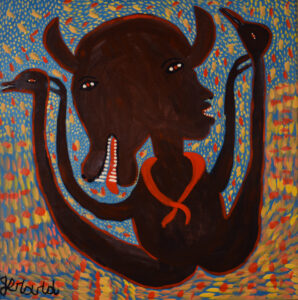
Gérard Fortuné, Two Headed Loa, c. 1985, acrylic on board, 24 inches x 24 inches, Morris/Svehla Collection, Ramapo College of New Jersey
Boscoe Holder
Boscoe Holder (1921 – 2007) spent 20 years in England realizing his career in both music and art before returning to Trinidad to concentrate on painting. His knowledge of the history of many unrecognized black dancers and musicians in the English-speaking West Indies was considerable, as was his understanding of the role of black performance in Britain during the 1950s. He eventually resettled in Trinidad in 1970 and concentrated on his painting, receiving awards for his achievements from the governments of Trinidad, Venezuela, and France as well as various institutions in the US.
Adapted from Boscoe Holder, The Guardian.
Ramphis Magloire
Ramphis Magloire (1961 – ) was born in Petionville, Haiti. His father was a house painter and his mother is the internationally known painter Louisianne St. Fleurant. Ramphis is a quiet, soft spoken young man who claims that his work is dictated to him by the spirits. A painting of his graces the cover of the Selden Rodman book Spirits of the Night. He is the older brother of the late Stivenson Magloire. His sister, Magda is also a prominent artist.
Adapted from Magloire, Ramphis, the Haitian Art Society.
Stivenson Magloire
Stivenson (also spelled Stevenson) Magloire (1963 – 1994) was born in Pétion-Ville, Haiti. His mother was Louisianne St. Fleurant, one of the founders of the Saint-Soleil movement. His paintings are expressionistic, populated with bizarre people, birds, and symbols. He was stoned to death in 1994 by personal enemies during the chaos that accompanied Haiti’s first days of the US occupation. His art is widely collected and is on display at the Figge Art Museum in Davenport, Iowa.
Adapted from Stivenson Magloire, Myriam Nader Art Gallery, New York.
Marta Perez
Marta Perez (1934 – 2004) was a painter and teacher. She gave art classes in the Veterans Administration and at the University of Puerto Rico and was also director of art for the Caribbean Consolidated Schools. For some time, she collaborated with master ceramicist Hal Lasky at the renowned Puerto Rican Pottery works. From the eighties to the end of her life, she dedicated herself completely to her painting in her studio in Old San Juan. The exoticism and diversity of allegorical references in some of her paintings reflect her own multicultural roots, as she was descended from Basque, Jewish, Greek, and Irish forebears. Exuberant colors, an agglomeration of elements, and female figures with mythical and angelic appearances are characteristic of her work.
Adapted from Marta Perez, Museo de Arte de Puerto Rico.
André Pierre
André Pierre (c.1916 – 2005) was a farmer and Vodou practitioner before being introduced to the Centre d’Art in Port-au-Prince in the late 1940s. His paintings always depict Vodou subjects, and Pierre himself later became a Vodou priest, or houngan. In 1996, Pierre was won the gold medal at the 5th Venezuelan Biennale. Painting, for him, was a religious rite.
Adapted from Kafou: Haiti, Art, and Vodou, Nottingham Contemporary.
Prospere Pierre-Louis
As a child, Pierre-Louis (1947 – 1997) assisted his father, a houngan, in preparing Vodou ceremonies. At sixteen he moved to Port-au-Prince where he worked a number of odd jobs. While working as a waiter at the home of Maud Robard he joined the Saint-Soleil movement, which disbanded after only a few years. Five of the artists involved in the Saint-Soleil movement, including Prospere, reorganized into the Cinque Soleils.
Adapted from Kafou: Haiti, Art, and Vodou, Nottingham Contemporary.
Louisiane Saint-Fleurant
Louisiane Saint-Fleurant (1924 – 2005) was an original member of the Saint-Soleil movement, and the only female member of the group. She originally worked as a cook, but took up painting in her forties. Later, she sold her paintings and ceramic sculptures from a shop in Pétion-Ville. She was the mother of five children, including Ramphis and Stevenson Magloire.
Adapted from Kafou: Haiti, Art, and Vodou, Nottingham Contemporary.
Denis Smith
Denis Smith (1954 – ) was born in Soisson-La-Montagne in the mountains above Port au Prince. In 1989, he was one of the founding members of the “Cinq Soleils” with Louisanne Saint-Fleurant, Prospere Pierre Louis, Dieuseul Paul, and Levoy Exil. Today, he and Levoy Exil are the only ones alive. His work appears in the books Haiti: Art Naif, Art Voddoo (1988), and Where Art is Joy/Haitian Art: The Forty Years (1988) by Selden Rodman, and Masterpieces of Haitian Art by Candice Russell.
Adapted from Denis Smith, Myriam Nader Art Gallery, New York.
Gerard Valcin
Gerard Valcin (1924 – 1988) was taught the art of painting from his father, but worked as a tile-setter until joining the Centre d’Art in 1959. He is one of the leading figures of the “second generation” of Haitian artists. His work is included in the permanent collections of the Musee d’Art Haitien in Port-au-Prince, the Milwaukee Museum of Art, and the Waterloo Center for the Arts in Iowa.
Adapted from Kafou: Haiti, Art, and Vodou, Nottingham Contemporary.
Frantz Zéphirin
Frantz Zéphirin (1968 – ) learned painting from his uncle, Antoine Obin, as a child. By the age of thirteen he was selling work to galleries. His painting departs from the Cap-Haïtien school in its mixing of Vodou symbolism with socio-political subject matter. In 2010, his The Resurrection of the Dead appeared on the cover of Time magazine.
Adapted from Kafou: Haitian Art and Vodou, Nottingham Contemporary.
OUTDOOR/CAMPUS ART
Alice Aycock
Alice Aycock has lived in New York City since 1968. She received a B.A. from Douglass College and an M.A. from Hunter College. She was represented by the John Weber Gallery in New York City from 1976 through 2001 and has exhibited in major museums and galleries nationally as well as in Europe and Japan. Currently she is represented by Marlborough Gallery, New York and Galerie Thomas Schulte, Berlin. She had her first solo exhibition of new sculptures with Marlborough in the fall of 2017. Her works can be found in numerous collections including the Museum of Modern Art, the Whitney Museum, the Brooklyn Museum, the LA County Museum, the National Gallery of Art, the Sheldon, Storm King Art Center, the Louis Vuitton Foundation, and the Sprengel Museum in Hannover, Germany. She exhibited at the Venice Biennale, Documenta VI and VIII and the Whitney Biennial.
Adapted From About the Artist, Alice Aycock.
R.M. Fischer
Sculptor RM Fischer was born in 1947 in New York, NY. His work can be found in many public collections, including at the Museum of Modern Art, New York, NY; The Boise Art Museum, Boise, ID; Dallas Museum of Art, Dallas, TX; The Carnegie Museum of Fine Art, Pittsburgh, PA; and Tamayo Museo Cultural Center for Contemporary Art, Mexico City, Mexico.
From the Contemporary Arts Center in Cincinnati, OH.
Ned Smyth
Sculptor Ned Smyth (1948 – ) lives and works on Shelter Island, NY. Smyth was raised in New Jersey and Italy. He earned a degree in art from Kenyon College in Ohio. He was part of the Pattern and Decoration movement, beginning in the mid-70’s which focused on patterning and decoration in fine art as a reaction to minimalism, which was championed by gallerist Holly Solomon, his art dealer.
Also known for his large-scale public works, Smyth has been shown in the Museum of Modern Art, the Whitney Museum of American Art, and the American Craft Museum all in New York, Guild Hall in East Hampton, the Louisiana Museum of Modern Art in Copenhagen, Denmark, P.S. 1, Long Island, and the Hirshhorn Museum of Art in Washington, D.C.
Adapted from the Artist Profile Archive.
IPPOLITO COLLECTION
Angelo Ippolito
Angelo Ippolito (1922 – 2001) was an Italian-born painter and one of the founders of the Tanager Gallery, an artist-run space that was part of the New York School of Abstract Expressionists in the 1950’s. Ippolito’s paintings are in the collections of the Metropolitan Museum of Art, the Museum of Modern Art and the Whitney Museum of American Art.
Adapted from Angelo Ippolito, 79, an Artist and Professor, The New York Times.
BUKSTEIN COLLECTION
Unknown Artist
The Andre Z. Pascal and Gregory Z. Bukstein Collection was acquired over several decades beginning in the 1960s. The Bukstein Collection is characterized by an Asian decorative arts emphasis, and also includes Japanese prints and eclectic pieces from Russia and Europe. Reflecting the enthusiasm and passions of Western travelers inspired by the arts of East Asia, the collection encompasses illustrious materials such as jade, porcelain, bronze, and ivory along with a variety of objects, such as ceramics, paintings, and textiles. This buddha figure is one of the many gems of the Bukstein collection.
Copyright ©2025 Ramapo College Of New Jersey. Statements And Policies. Contact Webmaster.
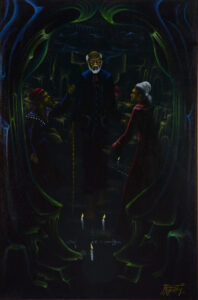
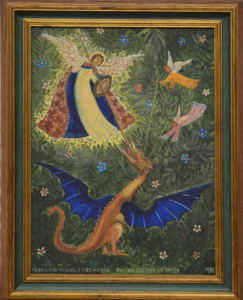
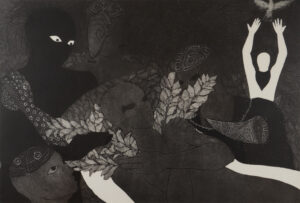
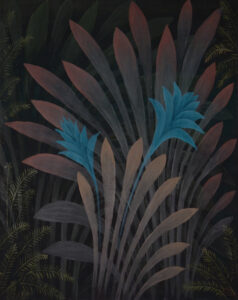
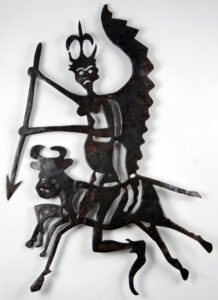
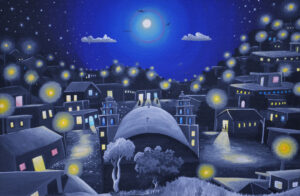
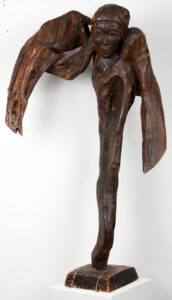
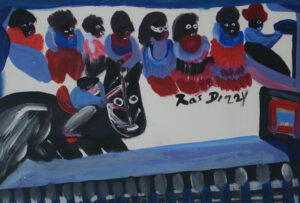
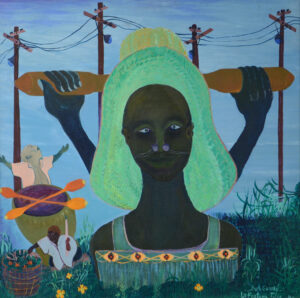
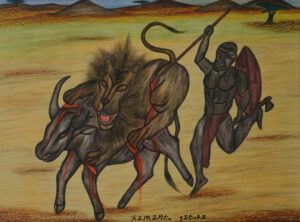
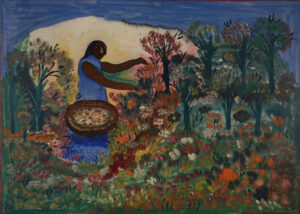
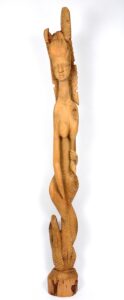
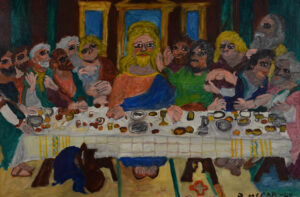
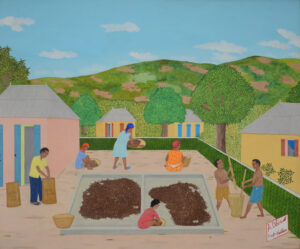
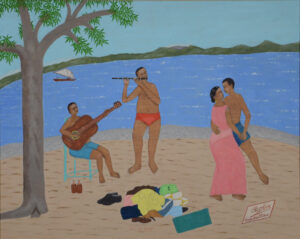
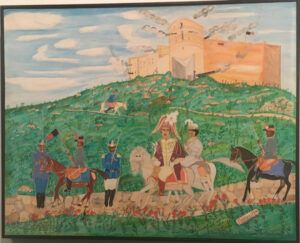
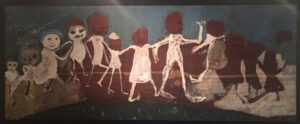
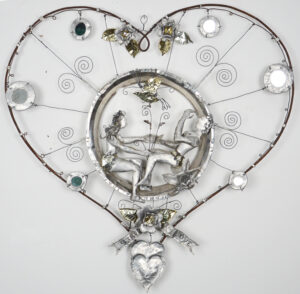
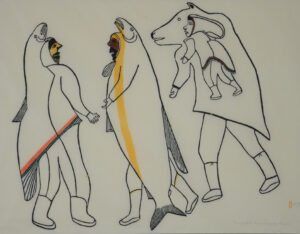
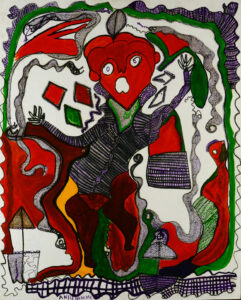
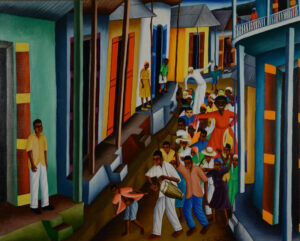
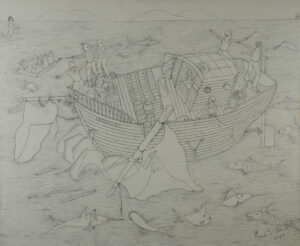
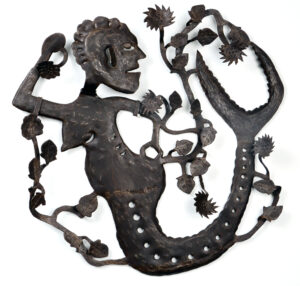
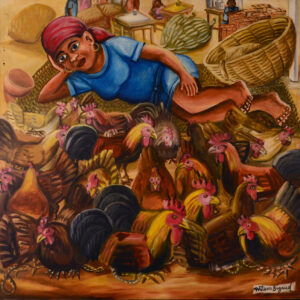
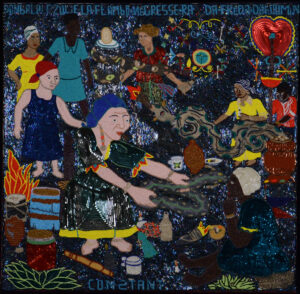
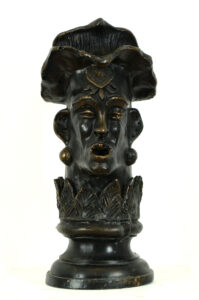
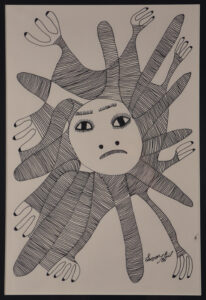
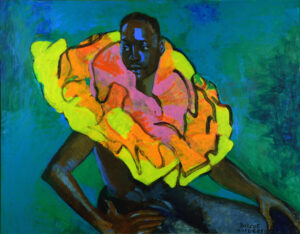
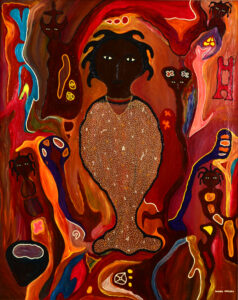
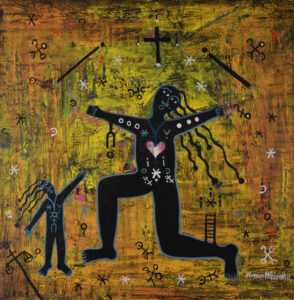
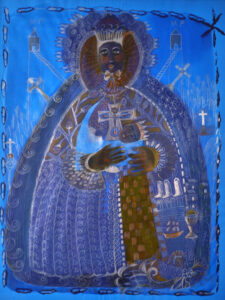
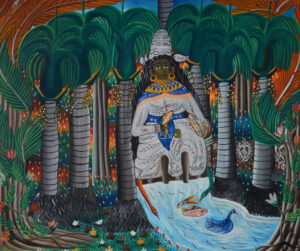
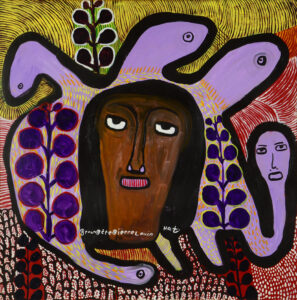
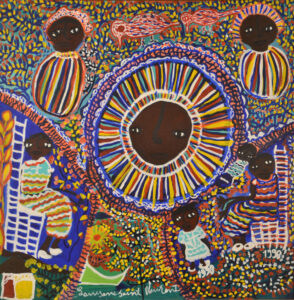
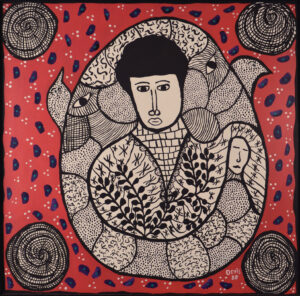
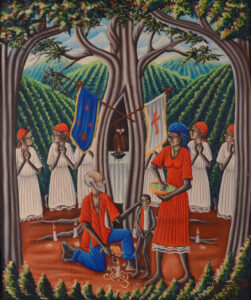
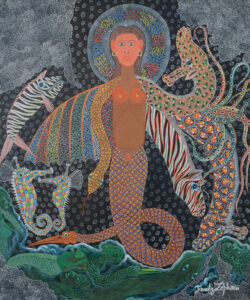


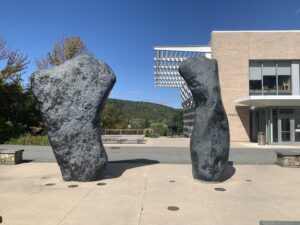
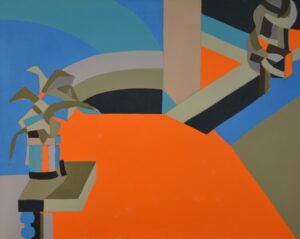
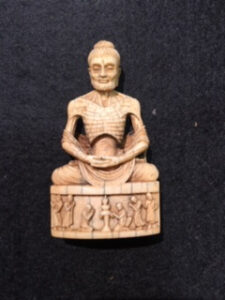

Follow Arch Performances